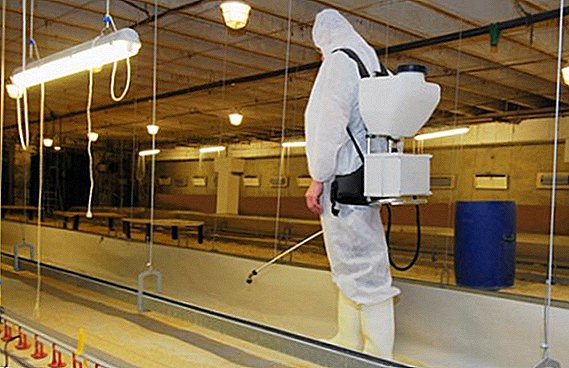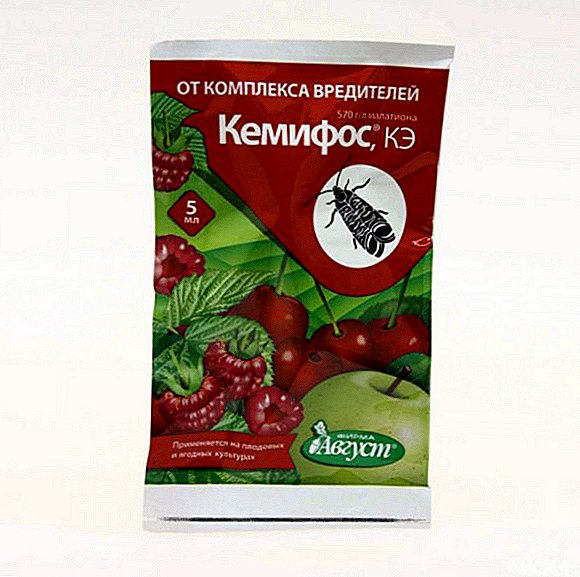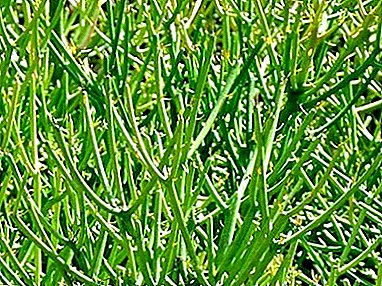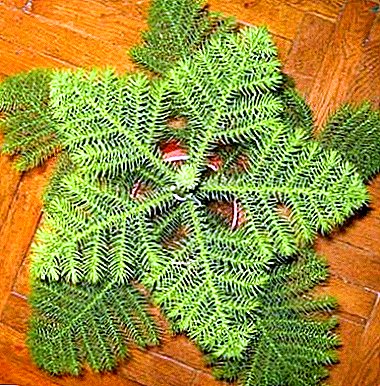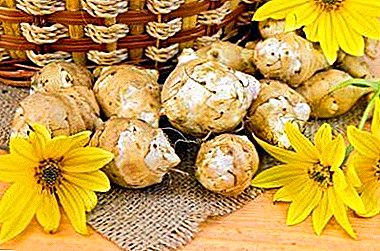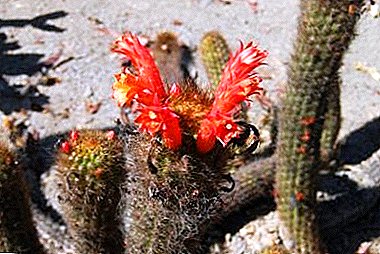
Cactus - one of the most common indoor plants.
He has long attracted the attention of many flower growers due to not complicated care, beautiful and rare flowering, exotic appearance.
Among existing species, Kleistokaktus is particularly popular.
Description and origin
"Kleistokaktus" belongs to the genus of cacti with fallen ribbed stems. For the first time it is found in literature in 1861. He is described by the French botanist Charles Lemer, who referred him to a separate genus.
The name of the flower was not accidental. Translated from the Latin language, it means "closed", "close". The name is associated with the structure of flowers, which are small tubes of 3-9 cm and almost always are in the closed position.
Interesting! In nature, Kleistokaktus is widespread in the rocky, hilly areas of Peru, Bolivia, in the foothills of Ang, Western Argentina.
Views from the photo
Scientists have 49 plant species.
In home culture most often grown the following representatives:
Strauss
Coloniform flower. Synonyms: "Silver Candle", "Kleistokaktus Strausii". In nature, it grows to four meters. It has a thin stem, about 5 cm in diameter. The nine ribs are divided into small tubercles.
Areola pubescent, large, with numerous thin, sharp, light spines, 2-4 cm long. The flowers are large (up to 4 cm in diameter), carmine, red, tubular. Homeland: Northern Argentina, Bolivia.
The photo shows Strauss Kleistocactus with proper care:
Vilpis Cauda
Quite a rare species in culture. Synonyms: vulpis-cauda, Cleistocactus brookeae ssp, Fox tail (translated from Latin). Endowed with a massive, wide, high stem, tapering towards the end.
As it grows, the stem can turn around and become bent or fall down, acquiring a creeping shape. Fully covered with light, thin spines. Flowers are bright, pink, located closer to the top of the cactus.
The photo shows “Vilpis Kauda” with proper care:
"Emerald Flowers"
Plant with a branching stem consisting of 13-14 ribs. The young stalk is first formed straight, and then begins to fall. Areola strongly pubescent, located on the edges of the ribs. The stem is completely covered with long, thin bright spines, brown. Flowers are large (up to 5 cm.).
Flower growers appreciate this look for an unusual color of flowers. Flower tube red-purple color. Petals scaly, inexpressive, green. In nature, it is found in northern Argentina, in the province of Catamarca.
The photo shows “Kleistokaktus Emerald” with proper care:
"Winter"
Endowed with thin, hanging, elongated stems that can reach up to one meter in length and 2 cm in diameter. From above it is covered with numerous, bristly spines.
The flowers are tubular in shape, with orange-red petals on the inside and pink outside. Inflorescences are large, reach 6 cm.
The photo shows “Kleistokaktus Vinter” with proper care:
"Ritter"
Cactus with erect, fairly massive stem. Top completely covered with light white thin spines. Kind of abundant flowering. Flowers are located closer to the top, yellow-green color. It grows in Uruguay, Argentina.
The photo shows “Ritter's cleistocactus” with proper care:
"Tupisi"
Cactus colonic, with a vertical erect stem. Top covered with spines of pale red or red color. The flowers are tubular, covered with small scales, curved, red. Homeland - the southern districts of Bolivia.
The photo shows the Tupisian Kleistokaktus with proper care:
"Bauman"
Very changeable unusual look. The stem is thin, long, up to 2.5 cm in diameter. Endowed with sixteen ribs. Fully covered with long, sharp, large bright spines. Flowers are located closer to the top, red.
The photo shows the Bauman Kleistocactus with proper care:
Home care
Although Kleistokaktus are very sensitive, they require attention and care, it is not at all difficult to learn how to care for the plant.
Actions after purchase
 Repotting is the first and foremosthow to start the right care.
Repotting is the first and foremosthow to start the right care.
Capacity and substrate in which there was a flower in the store, are used only for sale.
They are not suitable for constant plant maintenance.
To transplant a cactus, you need to take a new pot (about a size larger), put a drain, fill it with fresh substrate.
It is best to purchase a special mixture for growing cacti and succulents.
You can prepare the soil yourself. To do this, mix in equal proportions of coarse sand, turf and leaf earth. Add peat and brick chips to the mixture.
Then carefully remove the cactus from the old container, shake off the root system. Be sure to inspect the roots, whether they are affected by rot or pests. Only then you can proceed to transplanting.
Lighting
"Kleistokaktusy" very light-requiring. They do not need protection from direct sunlight. Most comfortably this flower will be located on the window facing south.
Pay attention to the light mode in the fall and winter.
During this period, the days are often overcast, rainy. If necessary, take care of creating additional artificial lighting.
Temperature
In spring and summer, the cactus will be comfortable in a room with a moderate, warm temperature - 22-26 degrees. In winter time comes rest. The temperature should be lowered to 11-14 degrees.
Lowering should no longer be, because the cold will adversely affect the health of the plant.
Important! The cactus does not like drafts, sudden changes in temperature.
In the summer, in dry, hot weather, take the plant outside so that it warms in the sun, ventilates, breathes fresh air.
Air humidity
The plant is well adapted for growing indoors with dry air. Additional moisture is not required. Only on hot summer days, you can sprinkle a flower with warm water 1-2 times a week. It will refresh it a little and remove dust.
Watering
 During the period of active growth requires frequent, regular watering.
During the period of active growth requires frequent, regular watering.
At the same time make sure that the soil dries well between watering.
The flower is much better tolerated by a lack of moisture than its excess.
Moisture stagnation can lead to the formation of rot.
In winter, the cactus is practically not watered.
Fertilizers
In its natural environment, the flower grows in soil depleted in minerals. It is well adapted to growing without fertilizers.
If you want to feed the plant, it is recommended to do this no more than once a month, only in spring and summer, and use only special fertilizer for cacti and succulents.
Bloom
Flowering time of Kleuktokaktus is spring. During this period, should increase the frequency of watering. To start flowering, it is important to properly care for him during the rest period.
Transfer
Kleistokaktus is sensitive to transplants. At a young age, it is transplanted in the spring once a year, and an adult flower only as needed (about once every 2-3 years).
Breeding
The flower is propagated in two ways: cuttings, seeds.
"Kids" cactus breed most often. To do this, carefully break off the stalk. Pay attention that it needs to be broken off, but not cut off. Then dried for 7 days in a dark, dry place and planted in the finished substrate for cacti and succulents. Cuttings are placed one in each container.
Note! At the time of rooting, they should be tied to a support so that they are fixed.
Seed planted less frequently, although they are sometimes found in specialized stores with detailed instructions for care and cultivation.
Sow them in peat-sand mixture. After the seedlings are formed, they are transplanted into separate containers.
Diseases and pests
 Health problems often occur with improper care.
Health problems often occur with improper care.
Excessive watering can cause root rot.
It is important to detect its occurrence in time, transplant the plant.
When transplanting the roots thoroughly washed with warm water, carefully cleaned from rot, affected parts, washed in a weak solution of potassium permanganate.
Of the pests, cactus is most often affected by spider mites, mealy worms.
The most effective way to fight - processing chemicals.
Currently, Kleistokaktus is becoming a very common indoor flower. This unusual, rare plant will become a real decoration of any modern interior. Although the flower is demanding care and attention, learning to care for it is not at all difficult.




